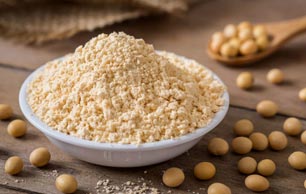
Soybean meal
Soybean meal is the most important protein source used to feed farm animals. It represents two-thirds of the total world output of protein feedstuffs, including all other major oil meals and fish meal (Oil World, 2015). Its feeding value is unsurpassed by any other plant protein source and it is the standard to which other protein sources are compared (Cromwell, 1999). While it has been an accepted part of livestock and poultry diets in the USA since the mid-1930s (Lewis et al., 2001), soybean feed production took off in the mid-1970s and then accelerated in the early 1990s due to a growing demand from developing countries. The expansion of aquaculture and prohibitions on the feed use of slaughterhouse by-products have also fueled the demand for this high-quality source of protein (Steinfeld et al., 2006).
Soybean meal is the by-product of the extraction of soybean oil. Several processes exist, resulting in different products. Soybean meal is usually classified for marketing by its crude protein content. High-protein types are obtained from dehulled seeds and contain 47-49% protein and 3% crude fibre (as fed basis). Other types of soybean meal include the hulls or part of the hulls and contain less than 47% protein and more than 6% crude fibre. In solvent-extracted soybean meals, the oil content is typically lower than 2% while it exceeds 3% in mechanically-extracted meals (Cromwell, 2012).

